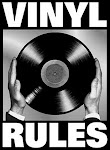In 1984, Elvis Costello and the Attractions released their album 'Goodbye Cruel World' and toured to support it. The album was their last with the original lineup of the Attractions, and it was recorded during a period of tension and disagreement, resulting in a commercially-oriented pop album. The tour included new arrangements of older songs, the single "The Only Flame in Town," and additions like Gary Barnacle on saxophone.
This post features a combined King Biscuit Flower Hour / Grizzly Growl broadcast of a concert with Elvis Costello And The Attractions at the The Spectrum, Philadelphia, 11 August 1984.
Nick Lowe and His Cowboy Outfit (which also featured Paul Carrack and Martin Belmont) opened the show.
This particular concert, in various forms, has been the source of a number of different bootlegs over the years. Unfortunately, none of them are complete. Although 28 songs were played, the known bootlegs contain anywhere from 11 to 23 songs. This particular release only contains 11 tracks, however if you want to hear a 23 track rendition of the concert, then I suggest you pop over to Wolfgang's website which features the legendary archives of concert promoter Bill Graham (born Wolfgang Grajonca).
Recorded on the tour promoting his 'Goodbye Cruel World' LP, this classic King Biscuit Flower Hour performance shows the musical transition Elvis Costello was going through during the mid-80s. His band, the Attractions, had received a facelift with the addition of Gary Barnacle on sax that brightened up many of the new songs in the show, and Costello himself somehow juggles his trademark new-wave sound with the more sophisticated and complex songs he had begun writing and recording at the time.
The classic Attractions line-up consisted of Steve Nieve on keyboards (who, on this tour only, called himself Maurice Worm for some unknown reason), Pete Thomas on drums and Bruce Thomas on bass. Costello and the Attractions had been popular for nearly seven years when this tour was launched, but he had already written and recorded ten albums of mostly short songs. Needless to say, there was a wealth of material to choose from on this tour and some of his greatest songs are featured here. At the time, Costello was enjoying one of the last chart hit singles he would have in his career with "The Only Flame In Town." (see pictured above)
Specific highlights include "Watching The Detectives", "Girls Talk" and "Allison", and of course the always energetic "Pump It Up."
Review (Taken from the Elvis Costello Wiki)
Another Grizzly Growl / KBFH broadcast (why on earth tape two consecutive nights from an artist known for varying his sets considerably during the course of a tour?) and so we get a similar performance and sound which is obviously very clear and professional but just a little too familiar. The band launch into “Let Them All Talk” along with Gary Barnacle’s sax squeals and the pace seems a little modest for an opening track.
The classic Attractions line-up consisted of Steve Nieve on keyboards (who, on this tour only, called himself Maurice Worm for some unknown reason), Pete Thomas on drums and Bruce Thomas on bass. Costello and the Attractions had been popular for nearly seven years when this tour was launched, but he had already written and recorded ten albums of mostly short songs. Needless to say, there was a wealth of material to choose from on this tour and some of his greatest songs are featured here. At the time, Costello was enjoying one of the last chart hit singles he would have in his career with "The Only Flame In Town." (see pictured above)
Specific highlights include "Watching The Detectives", "Girls Talk" and "Allison", and of course the always energetic "Pump It Up."
Review (Taken from the Elvis Costello Wiki)
Another Grizzly Growl / KBFH broadcast (why on earth tape two consecutive nights from an artist known for varying his sets considerably during the course of a tour?) and so we get a similar performance and sound which is obviously very clear and professional but just a little too familiar. The band launch into “Let Them All Talk” along with Gary Barnacle’s sax squeals and the pace seems a little modest for an opening track.
A powerful “The Greatest Thing” follows by a frolicking “Mystery Dance” (missing here) though the teasing of the audience with prolonged pauses isn’t yet developed here. The song immediately segues into “Shabby Doll” but the original masters of this recording fail to completely remove the song “Shabby Doll” so we just get a couple of seconds of Bruce’s bass note before the edit takes us into “Girls Talk”. The next two following tracks could not be more marked in terms of verve and musical frission with memories of 1977 and 1978 recalled with “Lipstick Vogue” neatly seguing into “Watching The Detectives”.
I actually bought a transcription L.P. of the KBFH recording of this concert in the late eighties for an absolute fortune - probably pre-1986 (before I got married!) and I’ve just played it for the first time in decades and I’m impressed by the quality of the vinyl at that time.
.jpg) |
| Concert Ticket Stubb |
This post consists of FLACs ripped from my 'Unlicensed' CD Bootleg, featuring 11 tracks from this KBFH FM broadcast, and uncludes full album artwork. This bootleg has been released under various titles, and some of their respective covers are shown below.
01 Let Them All Talk 2:56
02 Greatest Thing 3:08
03 Girls Talk 4:01
04 Lipstick Vogue 4:22
05 Watching The Detectives 6:04
06 Club Land 5:52
07 Everyday I Write The Book 4:23
08 The Flame In Town 3:37
09 Getting Mighty Crowded 3:31
10 Allison 4:10
11 Pump It Up / Ain't That A Lot Of Love
/Tears, Tears And More Tears 8:12
Elvis Costello - vocals, guitar;
Steve Nieve - organ;
Bruce Thomas - bass;
Pete Thomas - drums;
Gary Barnacle - sax, flute.
Elvis Costello Link (296Mb)































































